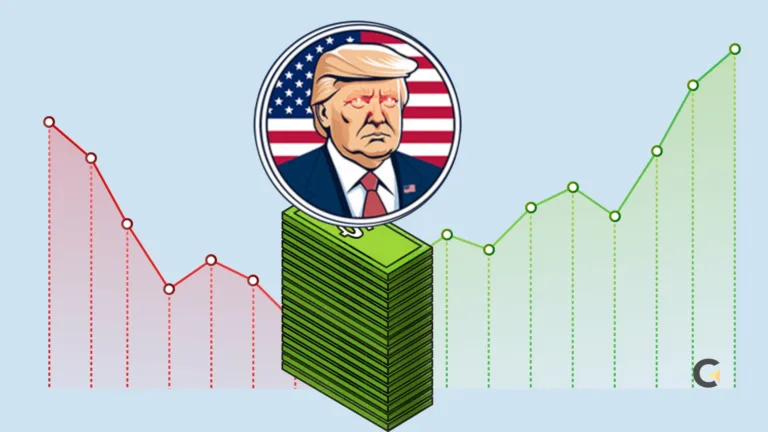Can Bitcoin Go to Zero?
The potential for Bitcoin to go to zero exists due to various risks and uncertainties. Market volatility, regulatory challenges, and technological vulnerabilities can greatly impact its value.
High-profile breaches may erode trust, while strict regulations can stifle adoption. Additionally, competition from altcoins complicates market dynamics.
Such factors raise concerns among critics who view Bitcoin as a speculative investment. Understanding these complexities reveals critical insights into its future potential. More detailed analysis will further illuminate these aspects.
Principal Conclusions
ShowThe Basics of Bitcoin and Its Value Proposition

Although Bitcoin emerged as a revolutionary concept in digital currency, its value proposition remains a subject of intense debate.
Advocates argue that Bitcoin serves as a decentralized store of value, akin to digital gold, with a limited supply of 21 million coins, making it resistant to inflationary pressures.
Its underlying blockchain technology enables secure, peer-to-peer transactions without intermediaries, potentially reducing transaction costs and enhancing financial inclusivity.
Critics, however, contend that Bitcoin’s primary utility is speculative investment rather than practical currency use, citing its lack of widespread adoption for daily transactions.
Additionally, concerns regarding regulatory scrutiny, environmental impact of mining, and technological vulnerabilities challenge its long-term viability.
Consequently, the evaluation of Bitcoin’s value proposition is complex and multifaceted, requiring careful consideration of various economic factors.
Historical Price Volatility and Its Implications
Historical price volatility of Bitcoin has been marked by significant fluctuations, reflecting shifts in market sentiment and external influences.
These price changes often correlate with regulatory developments and investor behavior, indicating that external factors can heavily impact the cryptocurrency’s perceived value.
Understanding these dynamics is essential for evaluating Bitcoin’s long-term viability and potential risks.
Price Fluctuations Over Time
Bitcoin has experienced significant price fluctuations since its inception in 2009, with its value soaring from mere cents to tens of thousands of dollars at its peak.
This volatility has led to both opportunities and risks for investors, as its price history illustrates dramatic rises and severe declines.
| Year | Price at Start of Year | Price at End of Year |
|---|---|---|
| 2017 | $1,000 | $14,000 |
| 2018 | $14,000 | $3,800 |
| 2020 | $7,200 | $29,000 |
| 2021 | $29,000 | $47,000 |
The implications of these fluctuations are profound, impacting market confidence, regulatory responses, and the overall adoption of Bitcoin as a legitimate asset class.
Market Sentiment Impact
How does market sentiment shape the trajectory of asset prices? Market sentiment plays a vital role in the volatility of Bitcoin’s price, reflecting the collective attitudes and emotions of investors.
Historical data demonstrates that Bitcoin’s significant price swings often correlate with shifts in sentiment, influenced by news events, technological developments, and macroeconomic factors.
For instance, during bullish phases, heightened optimism can lead to rapid price escalations, while bearish sentiment may prompt sharp declines.
This volatility can create feedback loops, where price movements further exacerbate emotional reactions among investors.
Consequently, understanding market sentiment is essential for predicting potential future price movements and evaluating the likelihood of Bitcoin approaching zero, as extreme fluctuations can undermine confidence in its long-term viability.
Regulatory Changes Influence
While regulatory changes often emerge as a response to market dynamics, their impact on Bitcoin’s price volatility has historically been profound.
These changes can create uncertainty, leading to dramatic price fluctuations. For instance, announcements from governments or financial regulators can either bolster confidence or instigate panic among investors.
The table below illustrates significant regulatory events and their immediate effects on Bitcoin prices:
| Date | Regulatory Change | Price Change (%) |
|---|---|---|
| 2013-03-29 | China bans Bitcoin | -50% |
| 2017-09-04 | South Korea’s crackdown | -20% |
| 2021-05-18 | China reaffirms ban | -30% |
| 2021-06-25 | US talks of stricter rules | -15% |
| 2022-11-10 | FTX collapse | -25% |
These instances underscore the critical role regulation plays in shaping market behavior.
Regulatory Challenges and Their Impact on Bitcoin

The global regulatory landscape surrounding Bitcoin is increasingly complex, with varying approaches taken by different countries.
Government bans and restrictions can markedly influence market perception and investor confidence, potentially impacting Bitcoin’s value.
Compliance and legal challenges further complicate the operational environment for cryptocurrency entities, leading to uncertainty in future market dynamics.
Global Regulatory Landscape
What factors contribute to the evolving global regulatory landscape surrounding Bitcoin and its potential implications?
Key elements include the increasing concern over money laundering, fraud, and tax evasion linked to cryptocurrencies.
Governments and regulatory bodies are responding with frameworks aimed at consumer protection and market integrity.
For instance, the Financial Action Task Force (FATF) has proposed guidelines that many jurisdictions are adopting, emphasizing Know Your Customer (KYC) and Anti-Money Laundering (AML) compliance.
Additionally, the rise of institutional investment in Bitcoin prompts regulators to establish clearer guidelines, balancing innovation with risk management.
As regulations tighten, Bitcoin’s volatility may be affected, influencing investor confidence and market dynamics.
Ultimately, these regulatory measures are critical in shaping Bitcoin’s future role in the financial ecosystem.
Government Bans and Restrictions
As governments worldwide grapple with the implications of cryptocurrency adoption, bans and restrictions on Bitcoin have emerged as prominent regulatory challenges.
These measures can considerably impact market stability, investor confidence, and the overall growth of the cryptocurrency ecosystem.
- Countries like China have implemented outright bans on Bitcoin mining and trading.
- Regulatory uncertainty can lead to volatility in Bitcoin prices.
- Compliance costs for businesses can deter innovation in the blockchain space.
- Restrictions can push users towards unregulated markets, increasing risks.
- Government actions may influence public perception of Bitcoin as a legitimate asset.
Such regulatory decisions reflect concerns over financial security, fraud, and environmental impact, underscoring the delicate balance between innovation and regulation in the cryptocurrency landscape.
Compliance and Legal Challenges
While traversing the complex landscape of cryptocurrency, Bitcoin faces significant compliance and legal challenges that can hinder its adoption and integration into mainstream finance.
Regulatory authorities across various jurisdictions are increasingly scrutinizing the cryptocurrency market, imposing stringent requirements on anti-money laundering (AML) and know-your-customer (KYC) protocols.
This regulatory uncertainty creates barriers for institutions considering Bitcoin investments.
Additionally, differing regulations between countries can lead to fragmented markets, complicating cross-border transactions. Legal ambiguities surrounding Bitcoin’s classification—whether as a currency, commodity, or security—further exacerbate compliance challenges.
According to a recent survey, over 70% of financial institutions cite regulatory risks as a primary concern, highlighting the pivotal role of compliance in Bitcoin’s future viability and its potential to reach zero value if these issues remain unresolved.
Technological Risks: Security and Scalability Concerns

How do technological vulnerabilities impact the long-term viability of Bitcoin? The security and scalability of the Bitcoin network are critical factors that affect its sustainability.
Vulnerabilities could undermine user confidence, leading to decreased adoption and value. Scalability issues may hinder transaction speeds and increase costs, limiting usability.
Technological vulnerabilities threaten Bitcoin’s security and scalability, risking user confidence, adoption, and long-term viability.
- High-profile security breaches can erode trust in the system.
- Network congestion can result in slower transaction times.
- Increasing transaction fees may deter small-scale users.
- Dependence on mining hardware creates centralization risks.
- Potential vulnerabilities in cryptographic algorithms could threaten integrity.
These concerns highlight that without addressing these technological risks, Bitcoin’s long-term future remains uncertain, raising questions about its ability to maintain a competitive edge in a rapidly evolving digital landscape.
Market Dynamics: Supply, Demand, and Competition
Technological vulnerabilities, particularly in security and scalability, are not the only factors influencing Bitcoin’s long-term viability; market dynamics also play a considerable role.
The fundamental principles of supply and demand dictate Bitcoin’s price fluctuations. With a capped supply of 21 million coins, any increase in demand can considerably elevate prices.
However, competition from alternative cryptocurrencies, or altcoins, introduces complexity, as innovative features may attract users away from Bitcoin.
Market sentiment, regulatory developments, and macroeconomic factors further impact demand.
Historical data indicates periods of heightened investor interest coinciding with market rallies, while downturns often correlate with negative news cycles.
Consequently, Bitcoin’s future remains intricately tied to evolving market conditions and competitive pressures within the cryptocurrency landscape.
The Role of Institutional Adoption in Bitcoin’s Future

As institutional adoption of Bitcoin continues to increase, the implications for its long-term viability become more pronounced.
This trend suggests that Bitcoin may solidify its role as a legitimate asset class, impacting market perceptions and stability.
Key factors to evaluate include:
- Increased liquidity as institutional investors enter the market
- Enhanced credibility through regulatory compliance and oversight
- Greater price stability due to diversified investment portfolios
- Potential for technological advancements via institutional backing
- Broader acceptance and integration into traditional financial systems
Such developments indicate that institutional interest could fortify Bitcoin’s positioning, potentially mitigating the risks of volatility and speculation.
Institutional interest may strengthen Bitcoin’s foundation, reducing volatility and speculation risks in the market.
However, the sustainability of this adoption remains contingent on regulatory frameworks and market dynamics.
Perspectives From Advocates and Critics of Bitcoin
The growing institutional adoption of Bitcoin has sparked a wide array of perspectives among both advocates and critics regarding its future.
Advocates argue that Bitcoin’s decentralized nature and limited supply make it an attractive hedge against inflation, while critics emphasize its volatility and regulatory uncertainties.
This divergence of opinion is essential in evaluating Bitcoin’s sustainability.
| Perspective | Advocates | Critics |
|---|---|---|
| Viewpoint | Store of value | Speculative bubble |
| Risk factors | High demand, scarcity | Regulatory challenges, security issues |
| Future outlook | Long-term growth | Potential collapse |
Wrapping Up
As the digital landscape evolves, Bitcoin stands at a crossroads, much like a ship steering through tumultuous waters.
Its potential to reach zero is tempered by a myriad of factors—regulatory winds, technological currents, and market tides.
While some view it as a beacon of financial freedom, others see it as a fragile vessel vulnerable to storms.
Ultimately, whether Bitcoin sinks or sails will depend on the collective response of its stakeholders amid an ever-changing maritime of economic forces.







